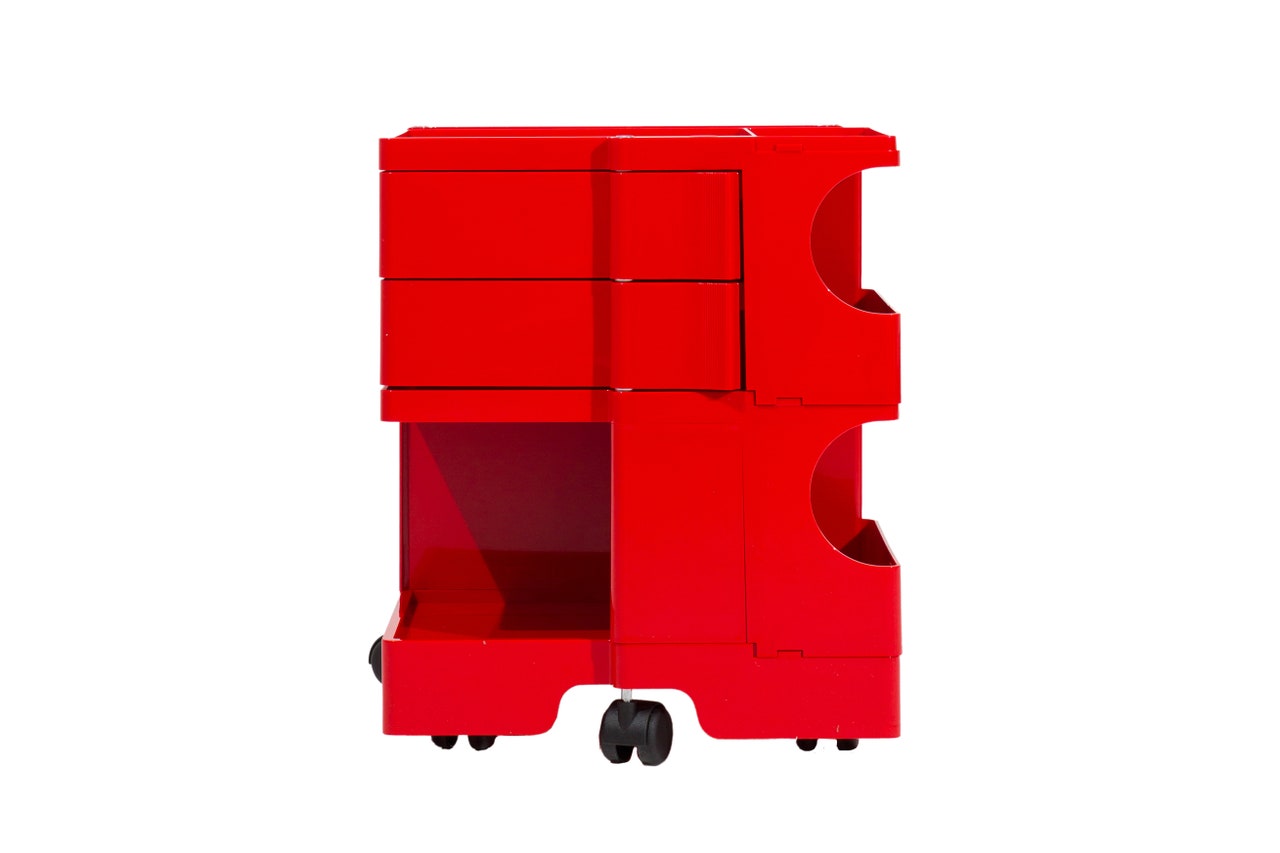Owing to their continuous production, the difference between new carts and old ones is slim. Old Bieffeplast models are different, for sure—those exposed to the elements can develop patina, and some
colors are louder. But picking up a new one off the Bi-Rite shop seems like the most frictionless way to shop for canonical furniture.
Strikingly, the new models seem just as collectible as the old ones. Old and new carts alike come in dozens of strange iterations, from insane multicolored flexes to intimidating tall boys to the direct, short models that feel hardest to get. (It’s just about impossible to find a vintage mini cart—you basically have to buy new.) Nominally, these are storage carts, with drawers designed for A4 paper. But they’re also art pieces, full of up-front, visible shelves, executed in Guggenheim-type angles.
With that new retro 70s aesthetic so popular—think about how much more plastic, bright or cartoony furniture is around now, compared to a handful of years ago—it feels almost shocking the carts were so cheap for so long. But at least in the United States, Colombo’s Bieffeplast masterpiece, mass-produced as it was, has mostly been misunderstood. In the decades Americans spent chasing staid Nordic teak carts and recognizable canon by Eames, non-organic materials felt cheap, and so Bobys got cheaper. That they were as much a key to Colombo’s design oeuvre as his breathtaking lamps and challenging chairs didn’t much matter. Plastic and visible storage were hard to perceive as art.
Snodgrass says the renewed interest in Bobys isn’t far off from people’s interest in other design greats of the era. New reproductions of pieces like Ray Wilkes’ Chiclet sofa for Herman Miller, Hay's Bruno Rey chairs, and a 1928 Mallet-Stevens chair that Bi-Rite produces itself all feel like examples of the marketplace changing. She thinks Colombo’s marriage of high-tech, space age, and pop—all serving functionality—is why the cart has persisted. “It's rare,” she says, “that you can nail both things.”
Those design bonafides explain why a 50-year-old plastic cart has become so resurgent. But the Boby is also riding the larger vintage-furniture wave that started rolling before the pandemic—and might have crested when unlikely furniture hounds found themselves googling Toshiyuki Kita "Wink" chairs while furnishing their new suburban homes. That’s the nice thing: good stuff isn’t incredibly hard to find anymore. Forgotten designers get rescued by archival accounts; items once restricted to Europe can now be delivered to the States without a third-party shipper. Sure, there’s not that much true vintage — but there never was, really. It’s more that, in a new world, we can judge whether we like things outside of their context, or how they fit in with the market, or trends. Plastic is now less a surprise than a feature. Color seems like a must. As more chic things get through the door, it’s obvious that we’d all want a Boby.
And with so many logistical snags pertaining to furniture—old lamps needing rewiring, couches requiring extra hands to move in, all good old stuff being rare, and fought over by the same vintage sellers and stores—not there with the Boby, the case seems open and shut. The tradeoff, with the secret now out, is that the cart probably won’t hover at $100 ever again. But it’s never been easier to snag one than now. So why wait?

